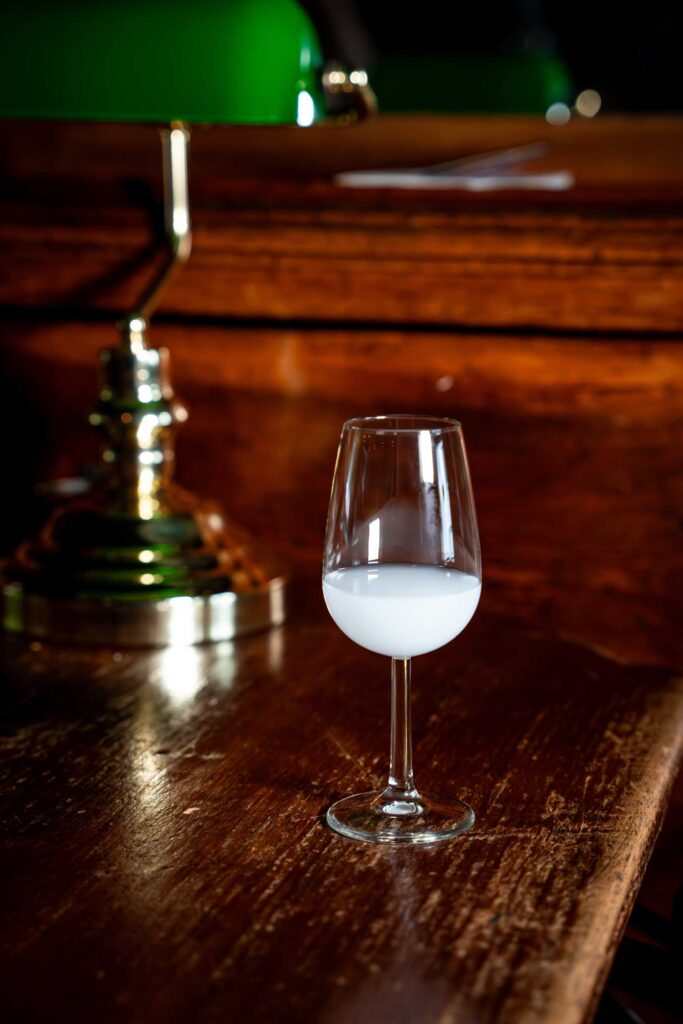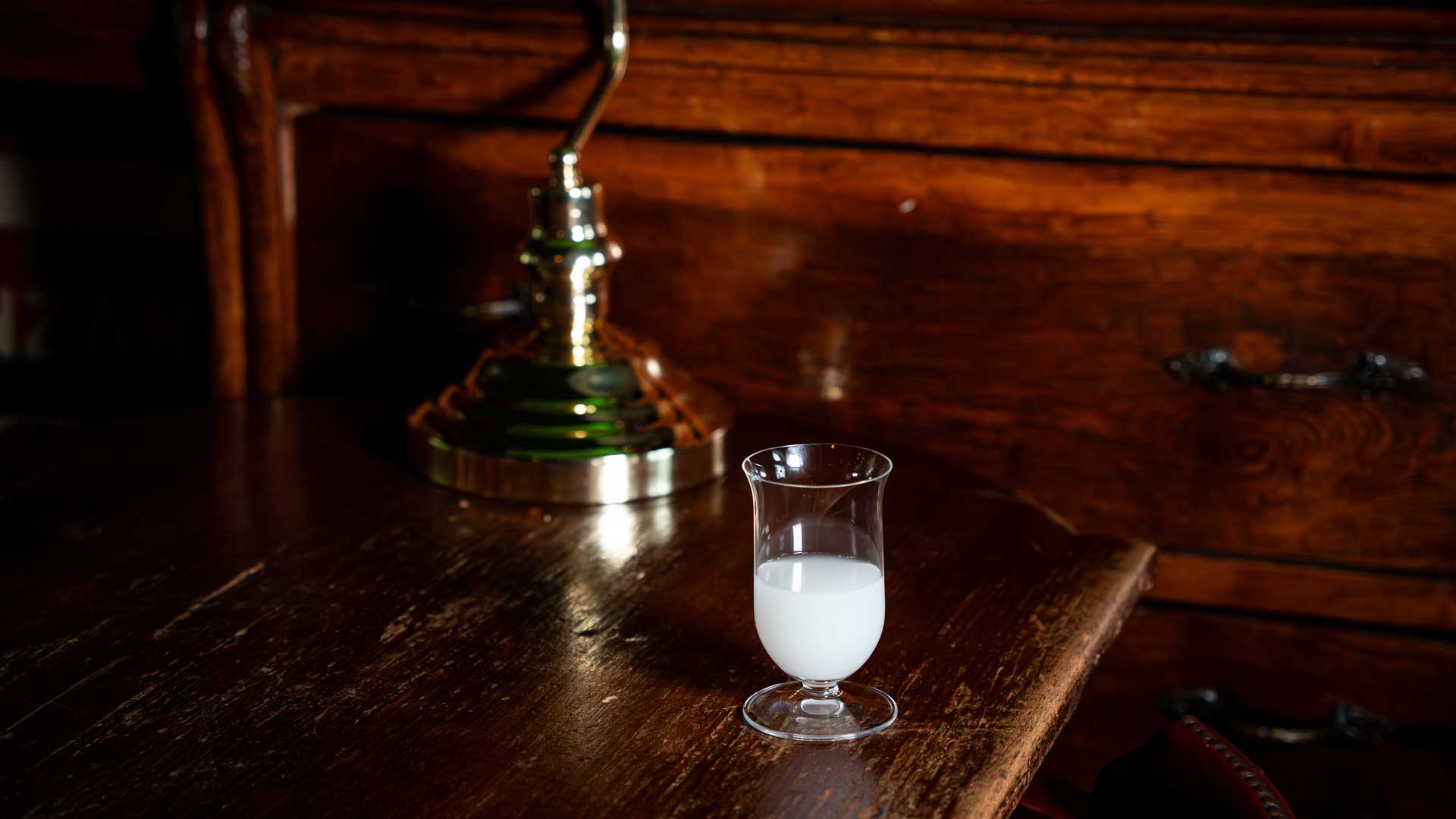Nigori, or nigorizake, is a style of sake rarely found in Italy, distinguished by its minimal filtration, which leaves it richer in body and cloudier than the more familiar expressions.
Nigori: What is it?
Since nigori is still a sake, it’s an alcoholic beverage produced through the fermentation of rice starch. Many steps in the process are identical in both cases. It begins with a specific type of rice, sakamai: the grains are polished, then washed and soaked. They’re then steamed, fermented, pressed, filtered, sometimes pasteurised, and finally diluted with water and alcohol to adjust the ABV.
Filtered, but Not Too Much
Once fermentation is complete, sake contains small solid residues, which are removed during filtering. This process also applies to nigori, but with one key difference: the filters have a looser weave, allowing fine rice particles to pass through. This directly affects the density and transparency of the final product.
One, a Hundred, a Thousand Nigoris
The mesh size is not fixed, and each producer can choose their own. That’s why in Japan you’ll find nigori that’s only slightly hazy as well as completely opaque versions (and noticeably thicker ones). Alcohol content also varies: it’s generally between 12% and 17% ABV, but lighter ones (around 10% ABV) and stronger ones (up to 20% ABV) exist. Nigori can even be sparkling—this happens if it’s unpasteurised, allowing fermentation to continue in the bottle.
The flavour profile also changes: some examples have marked acidity, others a pronounced softness, while some stand out for their dryness. There are floral or fruity versions, and endless blends of these elements. Nigori is especially appreciated for its rustic qualities, made immediately evident by the sediments in the bottle. This is why the rice polishing ratio (seimai buai) is generally not very low.
A long history
Historians believe nigori has existed for centuries. Exactly how long is unknown—just as the origins of sake itself lack a precise date. A certainty is that the technique for producing alcohol from rice reached Japan from China around 500 B.C. For many centuries, nigori was most likely made by farmers for family consumption. During the Meiji era (1868–1912), Emperor Mutsuhito declared it illegal, effectively wiping it out in Japan.
It wasn’t until the mid-1970s that nigori made its comeback, after long and patient lobbying of the Japanese government to amend sake regulations and allow the use of wider-mesh filters. This victory made it possible to revive centuries-old recipes—never entirely lost—and expand the range available on the market.
Nigori in Mixology

As with sake, nigori can be enjoyed neat—preferably chilled. Naturally, it can also be used in cocktails, and its wide variety of flavours and textures gives bartenders near-limitless creative options. Many nigori are slightly sweet, which makes them ideal alongside white vermouth, gin, citrus juices, or peach juice. They’re also perfect for lowering the alcohol content of a drink, fitting the growing low-alcohol trend.
A common practice is to shake the bottle before pouring, to mix the solids and create a uniform texture—but this isn’t mandatory. In fact, with skill and experience, bartenders can do the opposite. One such example comes from Japanese bartender Gen Yamamoto, who caused a stir in 2013 with his elegant, tiny eight-seat bar in the heart of Tokyo. From the day he opened, Yamamoto chose not to mix his nigori: the upper part of the bottle, more sparkling and delicate, was paired with mango juice; the richer, creamier lower part was combined with an edamame and hazelnut purée. Once again, the choice rests with the bartender—their talent will make all the difference.
Photo credits of Julie Couder x Coqtail, location MAG La Pusterla – all rights reserved







